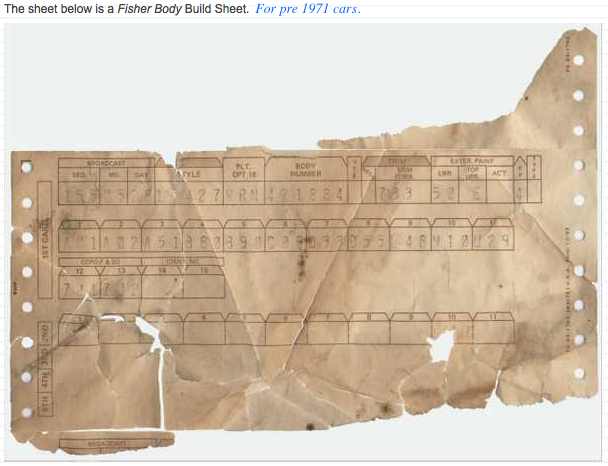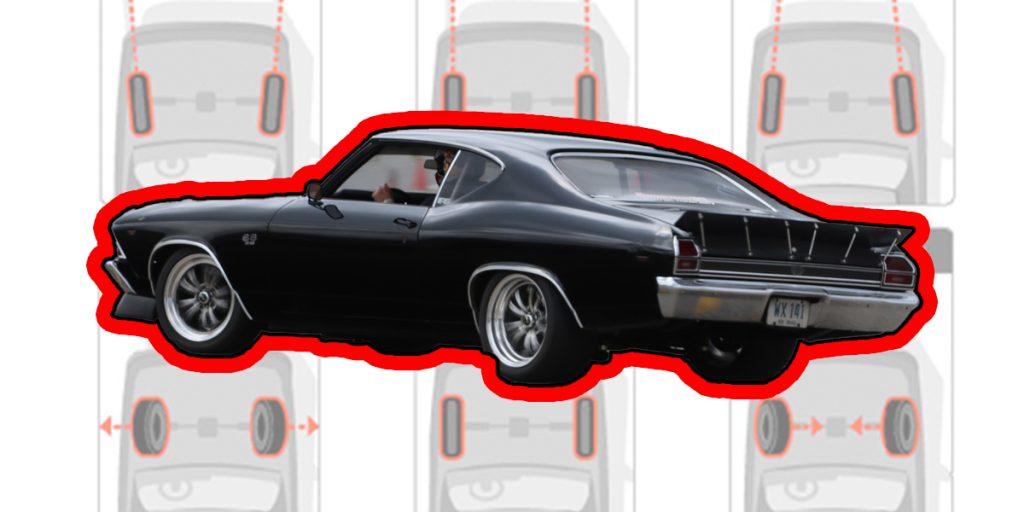Real or Fake? How To Spot A Super Sport
A classic 1960’s or 70’s Chevy Super Sport car is always going to be more desirable than its standard counterpart. Super Sport usually meant bigger and better engines and a different appearance package. Things like cowl induction hoods, racing stripes, different gauges, etc. The body itself was the same though, which posed a bit of a problem – it makes it somewhat simple to clone them and make a standard Chevelle into an Super Sport, for example.
Since the beginning of these cars coming out people have been cloning these Super Sports. That might be because they want the appearance of it or if they maliciously are trying to rip off the next buyer. Whatever the case may be, there are always a few ways to help figure out if the car is a real SS or not.
Understanding the Super Sport Package
The Super Sport package was available on several Chevrolet models, including the Impala, Chevelle, Nova, Camaro, and El Camino. Each model had specific features and options that distinguished the SS variant from its non-SS counterparts. While the details can vary by model and year, common characteristics of the SS package include enhanced performance engines, unique trim, and specific badges.
General Steps to Verify an SS Model
1. Check the VIN (Vehicle Identification Number):
- The VIN is the most reliable source for identifying a genuine SS model. On most 1960s and 1970s Chevrolets, the VIN can be found on the driver’s side dashboard, visible through the windshield, or on the driver’s door jamb.
- Decoding the VIN: The VIN provides information about the model year, assembly plant, body style, and engine type. Certain digits or characters in the VIN specifically indicate an SS model for certain years.

2. Examine the Cowl Tag:
- The cowl tag, located on the firewall of the engine compartment, contains additional information about the car’s original build, including body style, paint color, and interior trim.
- Codes and Designations: Look for codes that correspond to SS-specific features. For instance, certain interior trim codes or exterior paint codes may be unique to SS models.
3. Look for Super Sport Badges and Trim:
- Genuine SS models feature specific badges on the grille, fenders, and rear of the car. The placement and design of these badges can help confirm authenticity.
- Interior and Exterior Trim: SS models often have unique trim elements, such as bucket seats, console shifters, special steering wheels, and upgraded upholstery.
4. Engine and Performance Options:
- SS models were equipped with higher-performance engines compared to standard models. For example, a 1967 SS396 Chevelle would have a 396 cubic inch V8 engine.
- Engine Codes: Check the engine block for casting numbers and suffix codes that match those available in SS models. These codes can often be cross-referenced with factory records or reliable databases.

5. Suspension and Brakes:
- The SS package usually included upgraded suspension components and brakes. Look for signs of heavy-duty suspension, such as thicker sway bars, boxed control arms, and larger brake components.
- Chassis and Frame Differences: Some SS models have additional frame supports or different rear axle ratios to accommodate higher performance.
Specific Models and Indicators
Chevrolet Impala SS (1961-1969):
- VIN and Cowl Tag: For early models, the VIN alone may not be enough; the cowl tag and other documentation play a crucial role.
- Unique Features: Look for SS emblems, specific interior trim, and engine options such as the 409 and later 427 V8 engines.
Chevrolet Chevelle SS (1964-1972):
- VIN: For 1964-1968 models, the VIN includes specific digits indicating an SS model.
- Trim and Options: SS396 and SS454 badges, hood pins, blacked-out grilles, and special wheels are key identifiers. The presence of a cowl-induction hood is also a strong indicator.
Chevrolet Nova SS (1963-1972):
- VIN and Cowl Tag: The SS designation is often indicated by specific trim and engine codes.
- Interior and Exterior Features: Look for bucket seats, special upholstery, SS emblems, and higher-performance engines such as the 327 and later the 350 V8.

Chevrolet Camaro SS (1967-1972):
- VIN: The VIN and cowl tag are crucial for verifying an SS model.
- Performance and Trim: Check for the presence of a 350 or 396 engine, SS emblems, unique striping, and other performance upgrades.
Chevrolet El Camino SS (1968-1972):
- VIN: Similar to the Chevelle, the El Camino’s VIN can’t indicate an SS model in later years.
- Features: Look for SS-specific engines, trim, and interior features such as bucket seats and console shifters.
Documentation and Expert Verification
1. Factory Build Sheets and Documentation:
- Obtain any available factory build sheets, window stickers, or original sales documents. These documents can provide definitive proof of an SS model.
2. Expert Appraisal:
- If in doubt, consult with a knowledgeable appraiser or a classic car expert. They can provide an authoritative assessment of the car’s authenticity.
3. Historical Research:
- Use online databases, forums, and reference books to compare your findings with known examples of genuine SS models. Joining classic car clubs or networks can also provide valuable insights and access to knowledgeable enthusiasts.
Authenticating a real Super Sport Chevrolet from the 1960s and 1970s requires careful examination of the VIN, cowl tag, engine codes, and unique trim features. By following these steps and utilizing available resources, you can confidently determine whether a car is a genuine SS model. Whether for restoration, resale, or personal satisfaction, confirming the authenticity of an SS car raises its value and historical significance.
If you need further help determining if your car is a real Super Sport or not, give our friendly techs a call at (203) 235-1200 and hop on SS396.com for all your Super Sport parts!




